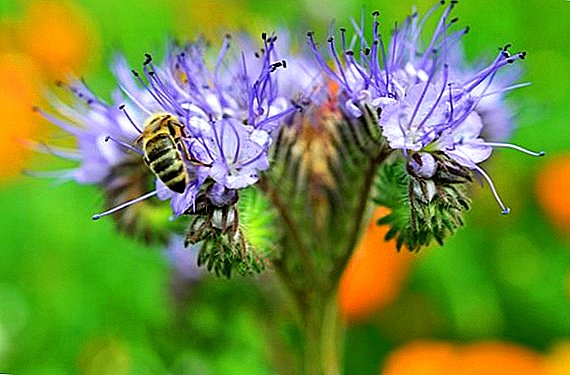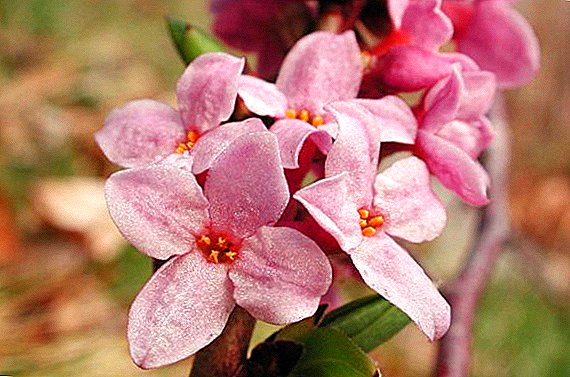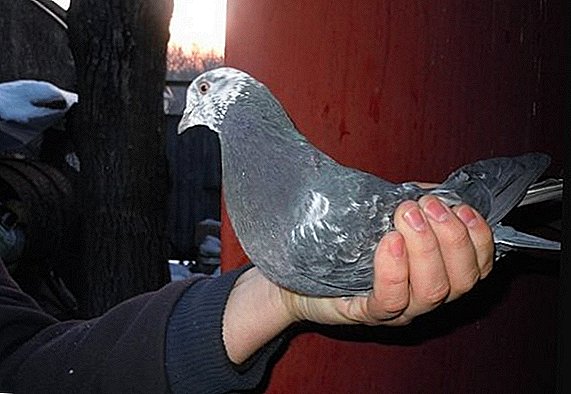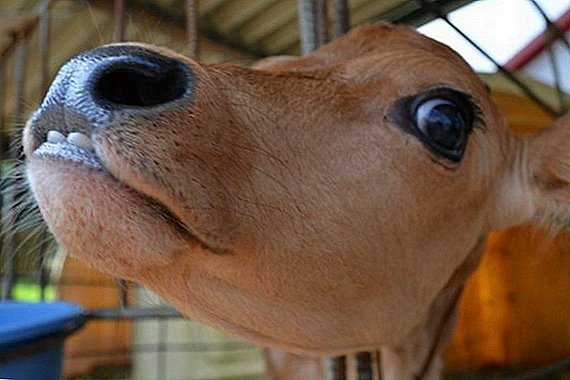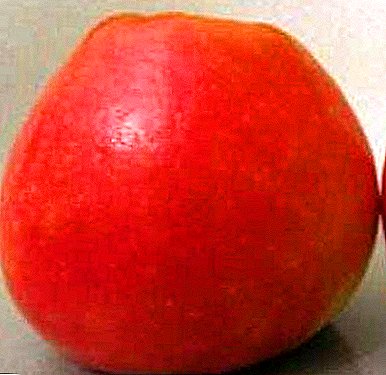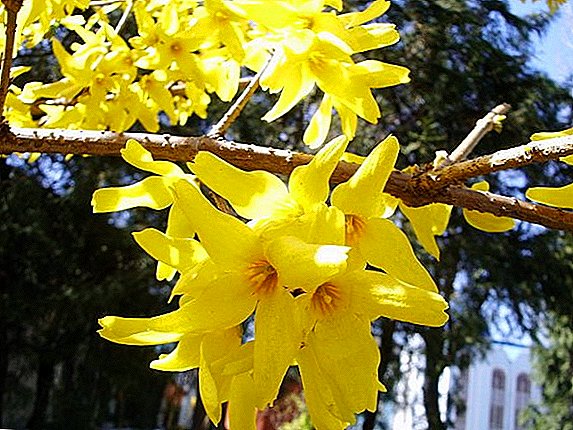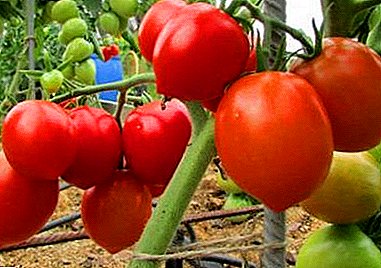 Often, when growing garden crops to protect them from wind and other negative factors, they are covered with special materials, which make it possible to get a harvest faster. In this regard, the most convenient structure is a greenhouse, the effectiveness of which depends largely on the material of its manufacture.
Often, when growing garden crops to protect them from wind and other negative factors, they are covered with special materials, which make it possible to get a harvest faster. In this regard, the most convenient structure is a greenhouse, the effectiveness of which depends largely on the material of its manufacture.
The most optimal and least expensive option is the construction of a greenhouse from the film, but that's what it will be, the usual polyethylene or reinforced, is up to you. If the majority of summer residents are already familiar with the first material, few people know about the features of the reinforced coating, which means that information on how to build a greenhouse made of reinforced polyethylene will be very useful.
Reinforced film: description, types and properties
 Reinforced film - It is a three-layer material with high strength and wear resistance. The two outer layers are formed by a light-stabilized film, and the inner one is formed by a reinforcing mesh with a thickness of 0.29-0.32 mm (the size of the film cells is 1 cm).
Reinforced film - It is a three-layer material with high strength and wear resistance. The two outer layers are formed by a light-stabilized film, and the inner one is formed by a reinforcing mesh with a thickness of 0.29-0.32 mm (the size of the film cells is 1 cm).
Due to its structure, such a film for greenhouses is very thick and durable, since the reinforced frame takes the load on itself. Among the main characteristics of the material emit the density, the material of the frame, the length and width of the canvas and the country of origin. The final price of the greenhouse from the reinforced film will depend on these properties.
Important! Such a shelter can not be removed from the frame of the greenhouse, if you live in regions with a temperate climate and relatively warm winters.The main characteristic of the reinforced film is its density. Material with high rates used in construction, while for the needs of agriculture can be applied and the film with a smaller value, but the same density indicator.
For example, for the construction of greenhouses and greenhouses material with a density of 120-200 g / m² is perfect. The color of the shelter can be white or transparent, since the light transmission directly affects the illumination, and hence the growth of plants.
Reinforced film has the following qualities:
- easily withstands temperatures from +50 ° C to +90 ° C;
- has a light transmittance of about 80% (a specific indicator largely depends on the type of film);
- It is characterized by increased resistance to external influences, which is ensured by the technical indicators of polyethylene, the thickness of the reinforcing thread and the size of the cells.
 However, the properties of the reinforced greenhouse film are strongly influenced by the additives that were used in its production. The types of material presented on the modern market depend on them. These include: frames made of polypropylene fibers, fiberglass filaments, woven polyethylene.
However, the properties of the reinforced greenhouse film are strongly influenced by the additives that were used in its production. The types of material presented on the modern market depend on them. These include: frames made of polypropylene fibers, fiberglass filaments, woven polyethylene.Also reinforced film may contain other bases:
- Polyamide - perfectly transmits ultraviolet rays and retains heat inside the greenhouse, but it swells and stretches from excessive moisture and excess water. For the winter, such shelter is removed.
- With a layer of cells that are filled with air bubbles. Greenhouses from the reinforced film of this type have very high thermal insulation properties, especially since the material is made of multilayer, with additional smooth outer layers. Thus, a thermos effect is created and the strength of the whole structure increases. For the winter you can not take it off, and it will easily serve up to three years.
- Copolymer reinforced film is characterized by high strength and transmits light by 90%. For the winter, you can not take it off, and its service life is 6 years. Mass distribution of this option is constrained by its high price.
How to use reinforced film in agriculture
In agriculture, reinforced film is used mainly to create greenhouses and greenhouses, although in some cases it can be used to solve other problems. So, it is often used in the construction of a shelter for the harvest or when creating canopies.  As for the arrangement of greenhouses and greenhouses, for them the manufacturers came up with a special "breathing" greenhouse reinforced film, which has microscopic holes in the cells. They allow air and moisture to enter the room. In addition, if you already have a greenhouse, but you want to insulate it better, then a cover for a greenhouse made of reinforced film would be an excellent solution to the problem.
As for the arrangement of greenhouses and greenhouses, for them the manufacturers came up with a special "breathing" greenhouse reinforced film, which has microscopic holes in the cells. They allow air and moisture to enter the room. In addition, if you already have a greenhouse, but you want to insulate it better, then a cover for a greenhouse made of reinforced film would be an excellent solution to the problem.
Such material can also protect the facade of the house from exposure to wind, rain and other weather phenomena, which will keep the heat in the rooms.
However, this is not all, because such a unique material is suitable for use in almost any business where you need to cover or pack the harvest or agricultural equipment and machinery.
Basic rules for the selection of reinforced films for greenhouses
In the modern market you will find a lot of offers from a wide variety of manufacturers that produce reinforced film under different brands. Each product may differ in a whole set of properties and characteristics, therefore, in order not to be mistaken and acquire really high-quality covering material, the consumer should consider the following indicators: the strength of the material, its light transmission ability, resistance to damage, and, of course, cost.
 As for the manufacturer of the reinforced film used to create greenhouses, you will find on the market Russian-made products, Danish and even Korean, although the latter most likely specializes in the production of polyethylene. The width of the reinforced material can be from two to 6 meters, and the length can vary within 15-20 meters. The service life of almost all such films reaches 6 years.
As for the manufacturer of the reinforced film used to create greenhouses, you will find on the market Russian-made products, Danish and even Korean, although the latter most likely specializes in the production of polyethylene. The width of the reinforced material can be from two to 6 meters, and the length can vary within 15-20 meters. The service life of almost all such films reaches 6 years.
The choice of a particular product, most likely, depends on your wishes and financial possibilities, but it is worth noting that if you need "breathing" material, then you should consider Danish products.
Important! There is a whole list of other specialized parameters that are typical only for certain types of multilayer films for greenhouses and greenhouses. For example, such properties as antistatics, antifogs and absorbers can be used to organize a special microclimate or to more conveniently operate a structure.When choosing a reinforced film, it is important to consider its color. So, a strong white film or a transparent product is more preferable to create a greenhouse, as it lets in a lot of sunlight. The green color of the material is also allowed, but here the green color greenhouse film indicates that it is made of low-quality raw materials. The use of blue film is allowed only when its density is more than 250 g / sq. m, although this product is already considered a material for construction and can be used for waterproofing and other needs.
 In some cases, you should pay attention to the "breathing" reinforcing film, which is especially useful for plants from greenhouses. With its help, a sufficient amount of oxygen will be supplied to the cultivated crops, and they will be protected from overheating.
In some cases, you should pay attention to the "breathing" reinforcing film, which is especially useful for plants from greenhouses. With its help, a sufficient amount of oxygen will be supplied to the cultivated crops, and they will be protected from overheating.
It is better to give preference to a shelter with a light-stabilizing additive, with which its lifespan is increased by 2-3 years.
Also, if possible, give preference to the film, supplemented by special fastening rings. They will significantly simplify the installation of this greenhouse cover, as well as eliminate the possibility of film rupture during installation. Based on the size of the greenhouse or the size of the greenhouse, it is possible to perform certain calculations and select the floor in accordance with the required value. Nowadays, a lot of different materials with different parameters are produced, so it will be easy to find a suitable option.
Installation of reinforced greenhouse film: how to cover the greenhouse and greenhouse
The installation of a reinforced covering is no different from covering a frame structure (or the ground right away) with a conventional greenhouse film. It is also stretched onto the frame and fixed with nails or special brackets, and especially enterprising summer residents even fix the film with clamps. In addition, most Danish products are already equipped with special rubber rings, which help to carry out the installation and to avoid cuts on the material.
 The process of installing the film on a greenhouse or greenhouse reinforced type may differ depending on the type of construction. Of course, many summer residents know how to cover the greenhouse with a wrap, but, in addition to frame structures, there are frameless options. So let's look at each of them in more detail.
The process of installing the film on a greenhouse or greenhouse reinforced type may differ depending on the type of construction. Of course, many summer residents know how to cover the greenhouse with a wrap, but, in addition to frame structures, there are frameless options. So let's look at each of them in more detail.
Frameless and frame greenhouses
The simplest option for plant shelter is considered to be frameless greenhouses constructed by covering the ground with a canvas (in this case reinforced with a film). The selected material must be laid bed immediately after sowing seeds, fixing the sides with stones or other heavy objects. It should be noted that even a durable polyethylene film is not as convenient for performing this task as heavy reinforced material, therefore the latter is considered more preferable.
In most cases, for the construction of frameless greenhouses use the already used shelter, which is no longer suitable for the organization of the greenhouse. Therefore, the old film does not need to immediately throw away, because, by cutting it into smaller parts, you can use the material for a frameless greenhouse.
 If you make ridges along the edges when organizing beds, then early grasses can be grown under a reinforced film. In this case, an additional frame is not required, since the film will sag slightly. Also a good option for a greenhouse are frame structures, for which wooden bars are arranged around the perimeter of the beds. The film is attached to them (for fixing the material it is better to use a construction stapler).
If you make ridges along the edges when organizing beds, then early grasses can be grown under a reinforced film. In this case, an additional frame is not required, since the film will sag slightly. Also a good option for a greenhouse are frame structures, for which wooden bars are arranged around the perimeter of the beds. The film is attached to them (for fixing the material it is better to use a construction stapler).
Frameless greenhouses are constructed in early spring (when it is still cool enough), so a material that can retain heat is better suited here. This product is reinforced film.
Frame greenhouses and greenhouses
 Reinforced polyethylene is an amazing material, and once having learned in practice what it is, you will use it again and again.
Reinforced polyethylene is an amazing material, and once having learned in practice what it is, you will use it again and again.
Of course, in agriculture it is best suited for the construction of greenhouses and greenhouses.
In the latter case, the material is tensioned onto a wooden or metal frame, fixing with staples, wires, nails or special clips.
However, if a conventional wire can be used for fastening on a metal structure, then to fix the film on a wooden base, it is necessary to prepare wooden planks and planks, which will make it possible to fix the canvas better.
The framework of the cellular type provides the strength of reinforced polyethylene used to create the greenhouse, since tensile loads are applied not only to the film itself, but also to the reinforced filaments. This is also very convenient in case of accidental damage to the material by cutting parts of garden tools or during a normal breakthrough. The hole simply does not crawl beyond the cell of the reinforced mesh.
For proper installation of durable film coating, first of all, you need to carefully inspect the frame of the greenhouse. You can not start the process of installing the coating in the presence of strongly protruding or sharp edges of the frame, otherwise there is a serious likelihood of damage to the material. When choosing a frame color, it is better to pay attention to light colors, since dark ones will get very hot in the sun, which will easily lead to thermal damage to the film. When directly fixing the material and securing the cover should be used only screws. 
Did you know? The first greenhouses, in the form in which we know them today, were built in the 13th century in Italy, where they were used to grow imported exotic plants.
The advantages of using reinforced film at the shelter of greenhouses and greenhouses
Durable film for greenhouses, called "reinforced", not for nothing so fond of many gardeners. It has a number of indisputable advantages that distinguish it favorably against the background of other similar materials. In particular, such advantages include: 
- high strength (any simple greenhouse film is much weaker in terms of stretching and resistance to mechanical stress, which is especially true for attachment points);
- high resistance to ultraviolet radiation while maintaining the bandwidth of UV rays (this effect was achieved through the use of light stabilizers);
- good resistance to decay, which is not surprising, since the process of decomposition of even the most ordinary plastic bags lasts more than 100 years;
- the ability to create a kind of microclimate in greenhouses and greenhouses by ensuring good tightness, which, in turn, leads to the absence of drafts;
- the ability to quickly repair the coating, especially with special repair kits (although a regular heated iron is suitable for sealing);
- ease of storage and transportation of the film, which was achieved due to the low weight of the material, compactness and release in rolls;
- high resistance to rain, strong wind, hail and other weather factors;
- environmental friendliness (reinforced greenhouse film is made of absolutely safe materials that can not harm human health or the environment);
- relatively low cost, especially if you compare the reinforced film with glass, polycarbonate or other durable materials.
Did you know? The real flowering of vegetable growing with the use of greenhouses falls on the first half of the XIX century, since it was at this time that a huge number of special greenhouse varieties of vegetables appeared, which were originally intended for cultivation in closed soil. Therefore, greenhouses began to appear in large quantities in all peasant farms, changing the status of the toy for the elect to the everyday thing for any gardener. In part, this result was achieved thanks to the cheapening of glass in Russia.
 Currently, there are many different materials, which, if there is a desire, can turn into an excellent greenhouse - a place by which all your vegetables ripen quickly and will delight you with great taste. However, when choosing a product, be sure to consider all the advantages and disadvantages of the purchase, which you already know about when choosing a reinforced film.
Currently, there are many different materials, which, if there is a desire, can turn into an excellent greenhouse - a place by which all your vegetables ripen quickly and will delight you with great taste. However, when choosing a product, be sure to consider all the advantages and disadvantages of the purchase, which you already know about when choosing a reinforced film.

